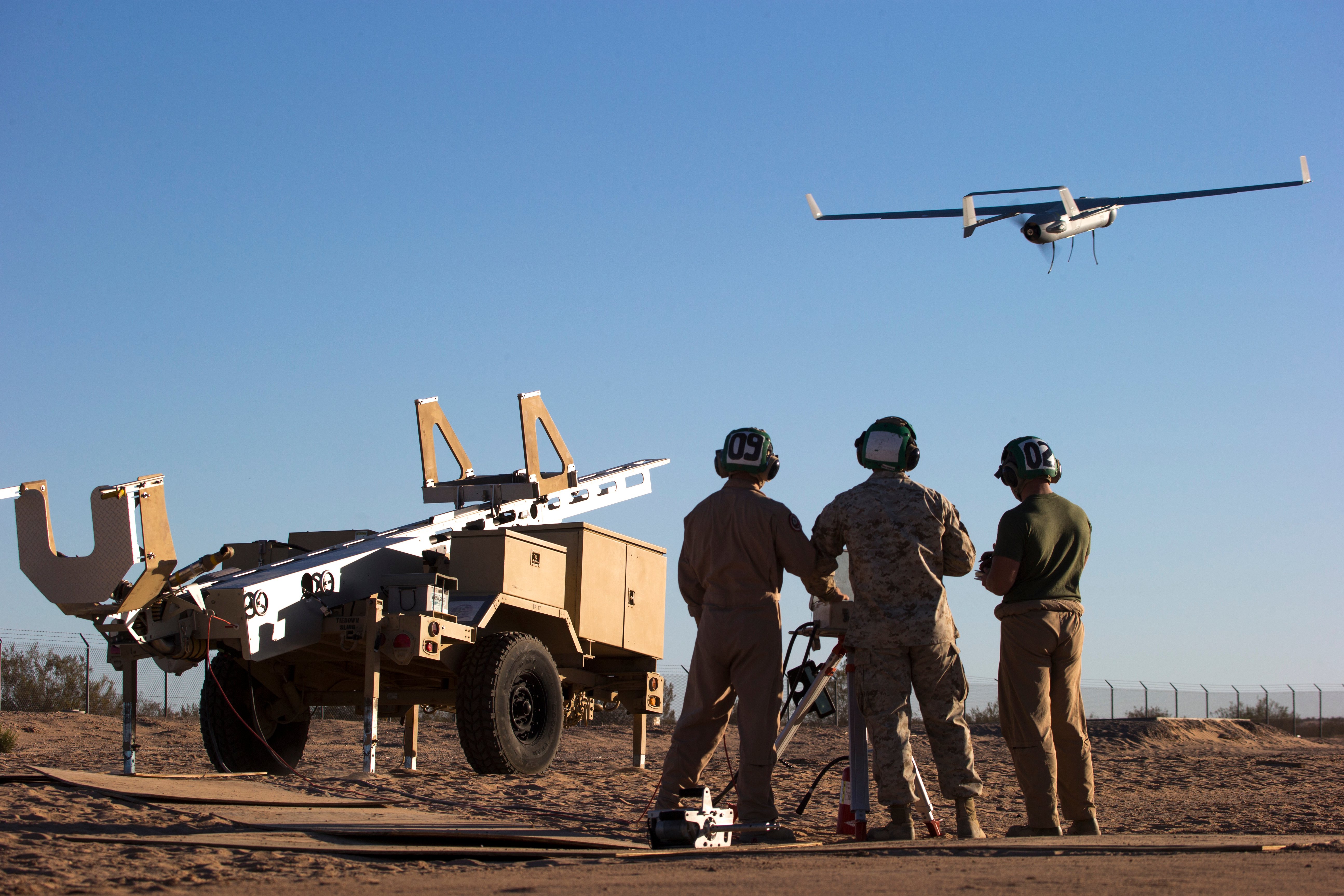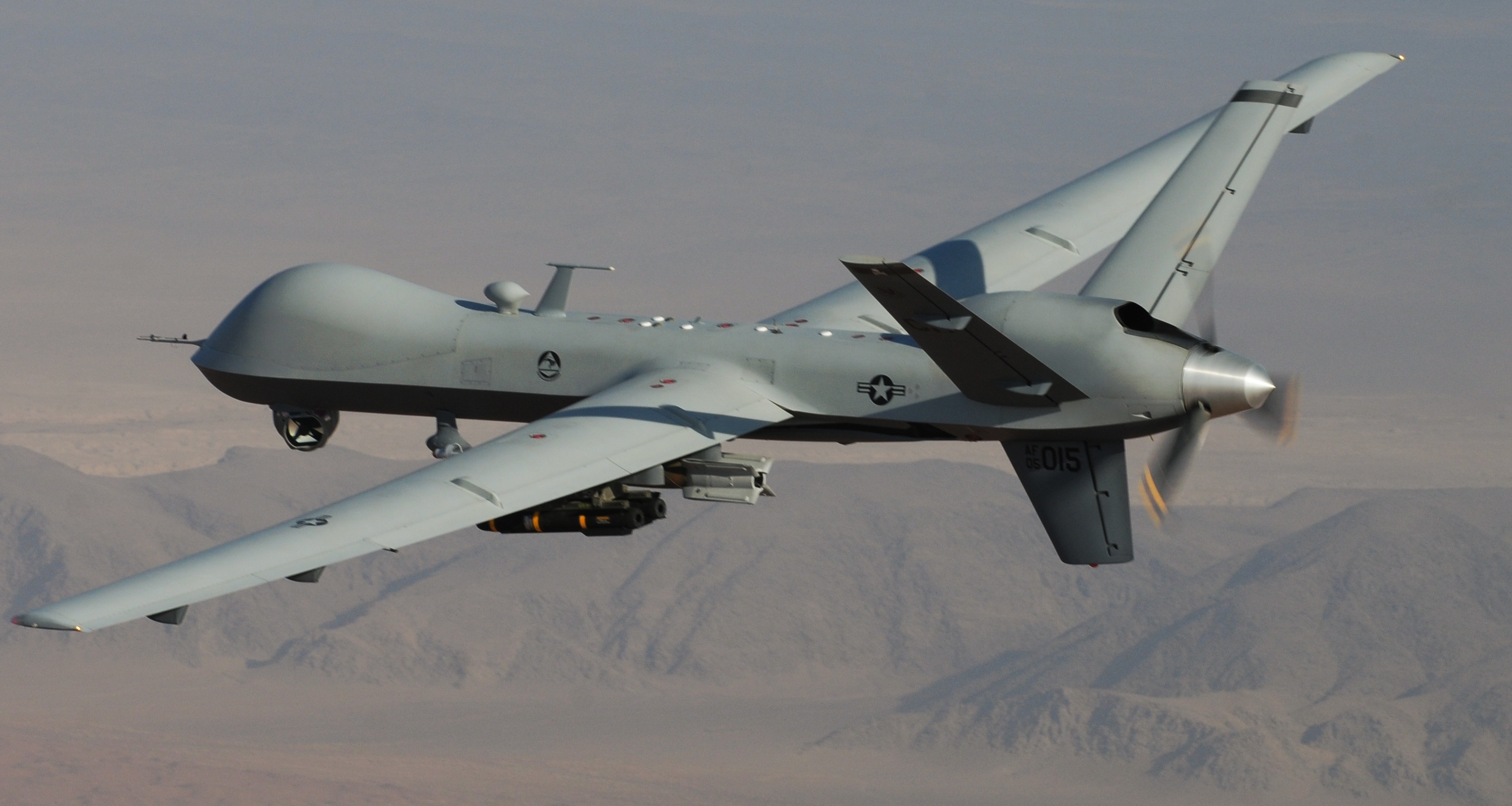
FREDERICKSBURG, Va. – The Marine Corps will work with the Air Force to put its Marine Unmanned Aerial Vehicle Squadron (VMU) crews through Group 5 UAV training to be qualified to operate MQ-9 Reapers. The idea is to help create an infrastructure and a knowledge base on large UAV operations ahead of fielding the Marines’ ship-based UAV in the 2020s.
The service is in the early stages of developing a Marine Air-Ground Task Force (MAGTF) Unmanned Aerial System (UAS) Expeditionary – called the MUX – that would be a similar size to the Reaper but would operate off amphibious and other ships and expeditionary fields without a runway. It is meant to focus on airborne early warning missions as well as command and control, electronic warfare and intelligence, surveillance and reconnaissance (ISR).
Col. James Frey, headquarters Marine Corps aviation expeditionary enablers branch head, told USNI News at a MUX industry day on June 6 that “our Marines go through flight school for UAS down at Randolph (Air Force Base in Texas) with their Air Force counterparts, same school. Then they break off ”before learning Group 5-specific skills,” he said. “We’re asking the Air Force, and they’ve approved, to send some of our crews through the finished training so they can fly Reapers, which is good because you build that base to have folks that eventually will be into MUX, so they’re used to having a Group 5 type things, so we’re not pulling everybody from fixed-wing and rotary-wing platforms.”
Frey said it is still unclear what those Group 5 UAV-trained crews would do after they finish training. The Senate Armed Services Committee notes in its version of the Fiscal Year 2019 National Defense Authorization Act that there is a shortage of RQ-21 Blackjack Group 3 UAVs for the Marine Corps today and that “procurement of a Group 5 type MALE (Medium-Altitude Long-Endurance) UAS solves all of the capability and performance gaps of the RQ–21 and will help the Marine Corps to more precisely refine its requirements for the future MUX program. Additionally, the experience gained in MALE UAS operations and fire support execution as well as the ISR acquired by using such a system will help to train and educate a new generation of Marine UAS operators and planners, who will then be ready to transition smoothly to a future MUX system. Therefore, the committee recommends … $100.0 million, for the acquisition of a Group 5 MALE UAS fleet.”
Though Frey said it was too early to talk about how many Reapers of their own the Marines may want, if any, he said there is a discussion happening in Marine Aviation now about, “as we look at the timeline for MUX, do we change our aviation plan and lease or buy Reapers to hit that land-based capability, but to get our remote split operations networks, our ops centers, our command centers – do we have that stuff built prior to having MUX? That’s something we’re looking at having right now.”

He said there is some requirement for Group 5 UAV capability among some Marine Corps units, but those requirements have been filled by Air Force and Army forces operating nearby.
“Every Marine wants a Reaper in his hip pocket, and it’s just not the way the world operates,” he said. “But we’re the last service, and there’s (Senate) language that says, Marine Corps, get into the Group 4, Group 5. We’re taking that onboard, but we’re trying to see it as we balance our whole aviation plan.”
The Marine Corps is still fielding the RQ-21, which provides ISR, communications relay and other services to Marine Expeditionary Units, Frey noted. The ability to either lease or buy Reapers as an interim opportunity would not come at the expense of RQ-21 procurement or MUX development, he said.
“As we’re still fielding something, we’re not ready to cut anything right yet to get [Reapers], so this is a natural transition,” he said of the plan to train alongside the Air Force.
Frey said during remarks at the industry day that the Marines are committed to not only bringing in a Group 5 UAS capability but one that is new and unique within the joint force.
“What makes us different and what is additive to the joint force? The vertical piece is really what does that,” he said about the planned vertical takeoff and landing capability to allow the air vehicle to operate on ships and expeditionary fields.





